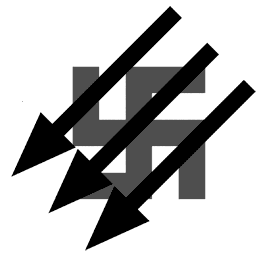Difference between revisions of "Holotopia: Socialized Reality"
m |
m |
||
| Line 194: | Line 194: | ||
<p>The reality of the Scripture, and the king's role as God's earthly representative, are familiar examples from Galilei's time.</p> | <p>The reality of the Scripture, and the king's role as God's earthly representative, are familiar examples from Galilei's time.</p> | ||
<p>But can you think of a more contemporary one?</p> | <p>But can you think of a more contemporary one?</p> | ||
| + | </div> </div> | ||
| Line 205: | Line 206: | ||
</div> | </div> | ||
<div class="col-md-3 round-images"> | <div class="col-md-3 round-images"> | ||
| − | [[ | + | [[File:Bourdieu.jpg]] |
| + | |||
</div> </div> | </div> </div> | ||
Revision as of 07:32, 14 April 2020
Contents
H O L O T O P I A P R O T O T Y P E
Socialized Reality
Pitch
Without giving it a thought, we adopted from the traditional culture a myth incomparably more subversive than the myth of creation. Still today, this myth serves as the foundation stone on which our culture has been erected.
The fact that the reality myth sneaked through our rational checks and balances can hardly be surprising. When I type "worldviews", my word processor complains; since there is only one world, there can be only one worldview—the one that corresponds to reality. The reality myth is hard-coded in our language; it permeates our culture.
Scope
We have come to the very heart of our matter—our culture's invisible foundations. Our analysis of those foundations is in two parts; we here take up the values, which determine what we consider worth preserving, creating, knowing and acting on. Related to the narrow frame insight we take up the language, the method and other tools which decide what can and can not be built, preserved and considered as "culture".
Recall that we are developing an analogy with Galilei's time and conditions, in response to Aurelio Peccei's diagnoses and recommendations. There can be no doubt that what was going on in Galilei's time was exactly the kind of change that Peccei's calls to action were pointing to. Galilei stands here in an iconic role—representing for us the idea that the reason can be empowered to challenge the conventional wisdom, and the time-honored truths written in the Scripture. Could a similar advent be in store for us today?
We are about to see not only a positive answer to that question—but also that this answer follows logically from the information we already own.
In addition to design and tradition, we define and use here another pair of keywords, epistemology and socialization. They will enable us to talk about our theme (how we know that something is "true" or "good" etc.). One might say that the tradition evolves and functions by socialization; and that a post-traditional culture must rely on epistemology. That would be a useful simplification—but an oversimplification none the less.
So let us rather recognize that socialization is and has always been the way in which the human cultures operate. Already in the cradle, and long before our capacity to reflect about those matters has grown, we adopt from our parents patterns of speech and behavior. At school, through innumerably many carrots and sticks, we learn to distinguish between "right" and "wrong". It is best to understand a culture as we understand an ecosystem—where everything depends on everything else; and whose wholeness can be disrupted by human action.
Notice that tradition is our ideal keyword. A culture is by definition capable of producing wholeness through spontaneous evolution, by trial and error and the survival of the fittest. The question is whether we are still capable of doing that, in the post-traditional culture we've created.
Facing now the perennial creative challenge—to undo the effects of our socialization, we may feel sympathy toward Galilei, Darwin and other iconic figures of the scientific tradition. They risked their reputation, and sometimes their very lives, acting as the informed reason demanded—while not only their socialized others, but also their socialized selves were telling them that they were wrong!
The meaning of epistemology may best be explained by looking at the academic tradition through the stories of the two main ions we here chose to represent it, Socrates and Galilei. A closer look will that both were instances of the empowerment of reason to disobey the socialization; and create a new—free and evolving, yet more solid—way to knowledge. Is the contemporary academia still capable of continuing this tradition, by acting accordingly when the circumstances demand that?
Was the Enlightenment's rebellion against the tradition, which still continues today, a disruption of nature-like or paradise-like wholeness?
Or was it a rebellion against a human order of things where people were socialized to obey the kings and the clergy, which kept the evolution in check?
Our point is that it was both. Or more precisely—that to see what has happened to us, and what we need to do now, we need to see our culture's evolution that resulted in the Englightenment in those two ways.
Myths and Errors
"Truth" means "correspondence with reality"
First of all that there is such a thing; and second that it is knowable, and provable.
Information must show us "the reality"
The purpose of information, and the value of information, is to be decided on one criterion alone—whether it shows us "the reality" in an "objectively true" way or not. That this is what distinguishes "real" or "good" information, from nonsense and deception.
A closely related error is to ignore implicit information (in academia, legislature, ethics...), and focus solely on information that explicitly claims something.
View
The evolution of knowledge of knowledge has brought us into this situation; in front of the metaphorical mirror.
This metaphor has several connotations:
- Seeing ourselves; from a situation where we believed (had every reason to believe, or it appeared so) that what we see (with our eyes, our reason, and the refined instruments of science) is the reality, we have evolved to see how we construct what we see; seeing the limits of our seeing, and knowing
- Seeing ourselves in the world; in a human world that is in a completely new situation, and has completely new needs, than when during the Enlightenment and the Scientific and Industrial Revolution, when our present foundations took shape
The substance of our KF proposal, as already noted, is a complete prototype of an academic reality on the other side of the mirror. What we are talking about here is how to 'go through'.
The academia has the prerogative to guide us through the mirror. (Assuming that Peccei was right), it holds the key to our future.
By adopting the rational foundation that the Enlightenment left us, we became able to know, collectively, that women can't fly on broomsticks. Innumerably many superstitions and prejudices were dispelled.
But we have also thrown out the baby with the bathwater. We have no foundation on which we can preserve the traditional heritage. And no foundation for reconstituting the myriad functions of a culture, and hence the wholeness that the traditional culture (we assume) represented.
Consequently, we have abandoned the production of culture to counterculture; to advertisers, political propaganda, superficial interests... We are now molded by those interests. What they need is not "human development"; they mold us to be sheepish, selfish and obedient.
Action
Four courses of action follow as rather obvious, yet necessary, from the self-reflection in front of the mirror.
Truth by convention
A new 'Archimedean point', to replace old formulas such as Descartes' "cogito", and Galilei's "Eppur si muove". We need it to once again give knowledge the power to 'move the world'.
We did not invent truth convention; our only innovation was to turn itself into a convention. But that makes all the difference—by giving us a completely solid new foundation to build on, independent of "reality". We can then define an epistemology explicitly—not as a statement about reality, but as a convention. Our epistemology is a prototype; it has provisions that allow it to evolve further.
Design epistemology
This new epistemology is roughly what the Modernity ideogram, the bus with candle headlights is saying: Information (and the way we handle it) is a piece in a larger whole; and it must be treated accordingly.
The design epistemology is, of course, stated as a convention. Other conventions, for other purposes, can be made, by using this approach.
Information is "recorded experience
According to this convention, information, reflects human experience, not "reality".
Anything that records experience is (or can be considered as) information. A chair is information because it embodies the experience about sitting, and chair making. This definition includes, rituals, myths, customs, values and so many other elements of the tradition as potentially containing valuable information
We recognize it as our challenge to federate the information contained therein.
Knowledge federation
The prototype we proposed is of an 'evolutionary organ', which the academia may use to federate information into systemic change, in culture and beyond.
The Holotopia prototype is of course an example.
Federating socialized reality
Plan
Three insights will here be federated:
- "correspondence with reality" is a myth
- "reality" is constructed—by our cognitive organs; and our society
- "reality" is a product of socialization
These three insights constitute a radical departure from the positivist frame of mind, which tends to mark education.
Reality is a myth
It is sufficient to quote einstein
A myth is a popular belief that cannot be verified—but serves certain social and cultural roles.
Two quotations of Einstein, repeated in several places already, including Federation through Images on this website, are sufficient to make this point:
- The closed watch metaphor explains why "correspondence with reality" cannot be verified
- The quotations about the two illusions confirms that "correspondence with reality" is (according to 'modern science') a product of illusion
Reality is constructed
It was described by Piaget, Maturana and Berger and Luckmann, along so many others; read from here.
Reality is socialized
This development—how exactly we learned, painstakingly, that we are not those "objective observers" we believed we were (an assumption based on which so much of our world has been developed)—is so central to the Holotopia project, that we here take time to point to some of its milestones.
Socrates – Galilei
The key point here is Piaget's "the reason organizes the world by organizing itself"
Pavlov – Chakhotin
Pavlov's experiments on dogs (for which he was awarded the Nobel Prize) can serve as a parable for socialization
After working with Pavlov in his laboratory, Chakhotin participated in 1932 German elections against Hitler. Understood that Hitler was conditioning or socializing the German people. Wrote "Le viole des foules..." (see the comments, link TBA).
Chakhotin practiced, and advocated, to use non-factual or implicit information to counteract the socialization attempts by political bad guys (see the image on the right). Adding "t" to the familiar Nazi greeting produced "Heilt Hitler" (cure Hitler).
Murray Edelman
Already in the 1960s the researchers knew that the conventional mechanisms of democracy (the elections) don't serve the purpose they were assumed to serve (distribution of power)—because (field research showed) the voters are unfamiliar with the candidates' proposed policies, the incumbents don't tend to fulfill their electoral promises and so on. Edelman contributed an interesting addition: It's not that the elections don't serve a purpose; it's just that this purpose is different from what's believed. The purpose is symbolic (they serve to legitimize the governments and the policies, by making people feel they were asked etc.)
Edelman, as a political science researcher, contributed a quite thorough study of the "symbolic uses of politics".
Freud – Bernays
Freud, famously, fought and won a battle against the prevailing belief in the pure rationality of the human animal, by showing the power of the unconscious. His American nephew, Edward Bernays, saw how Freud's research can be adapted to be used for commercial purposes.
Honored by Life as "one of the 100 most influential Americans of the 20th century", and as "the father of public relations", Bernays gave socialization a scientific foundation—as his titles Crystallizing Public Opinion (1923), Propaganda (1928), Public Relations (1945), The Engineering of Consent (1955) might illustrate. "Citing works of writers such as Gustave Le Bon, Wilfred Trotter, Walter Lippmann, and his own double uncle Sigmund Freud, he described the masses as irrational and subject to herd instinct—and outlined how skilled practitioners could use crowd psychology and psychoanalysis to control them in desirable ways." (Wikipedia)
Berger and Luckmann
Their 1966 "Social Construction of Reality" is a sociology classic. What interests us here is, however, their observation that social reality constructions tend to be turned into "universal theories"—and used to legitimize the political and economic status quo.
The reality of the Scripture, and the king's role as God's earthly representative, are familiar examples from Galilei's time.
But can you think of a more contemporary one?
Bourdieu – Damasio
Bourdieu left us a complete theory of socialization. We honor him as the icon of socialized reality.
Damasio contributed an essential piece in the puzzle—a scientific explanation, from the laboratory of a cognitive neurologist, of the primacy that embodied socialization has over rational thought. His title "Descartes' Error" brings home the main point—Descartes, and the Enlightenment, got it all wrong; we are not rational decision makers!
- Back to five insights.




